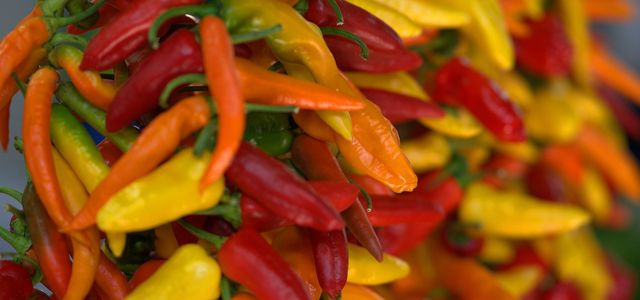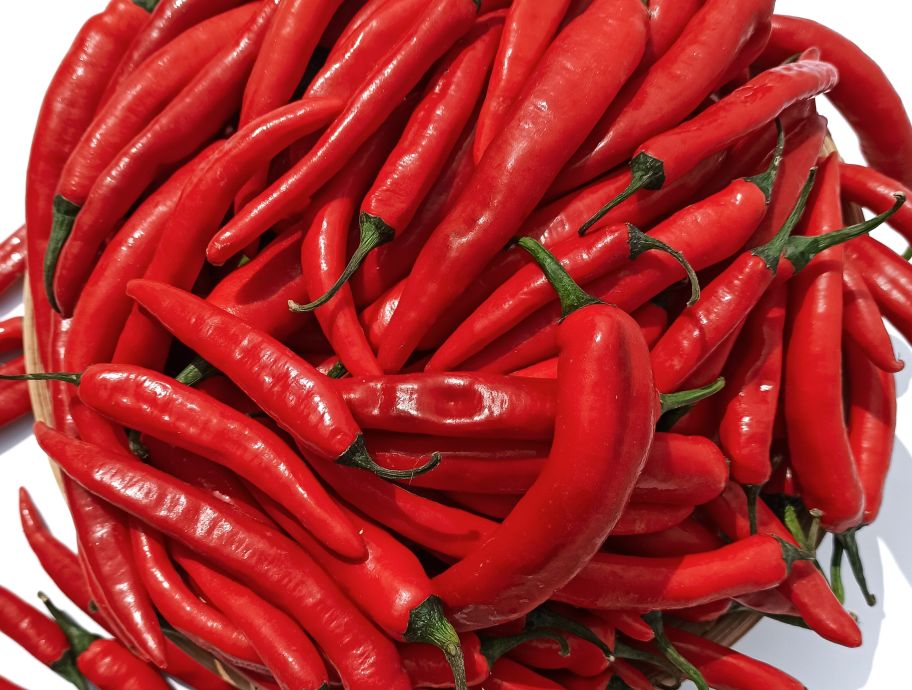Chili varieties differ in terms of their degree of spiciness and aftertaste. We give you a brief overview of three of the most popular chili varieties.
There are many well-known types of chili that you can use for different dishes. In addition to the fiery taste, chillies are also very healthy: They contain a lot of vitamin B1 and vitamin C. They also provide minerals such as potassium, calcium, magnesium, phosphorus and zinc.
Capsaicin is responsible for the sharpness, which also stimulates blood circulation and digestion and is good for the immune system. The hotness of chilies is measured using the Scoville scale. One milligram of capsaicin per kilogram corresponds to 16.1 Scoville (SHU), for example.
Sustainability of chili varieties

From an ecological point of view, it is better if you grow your favorite chili varieties yourself. Chilies originally come from rather warmer areas, such as the Caribbean or New Mexico in the USA. If you grow your own, you avoid unnecessary transport routes. If you want to plant one or more types of chili, use organic seeds. This way you can be sure that the seeds do not come from conventional agriculture and do not contain any chemical-synthetic pesticides. You can buy organic chilli seeds from Bingenheimer Saatgut, for example.
You can also make chili powder or chili paste yourself from fresh chillies. Any type of chili is suitable for air drying. However, if you want to dry the chillies in the oven, for example, you should use thin-walled chillies. Cayenne, for example, is one of the thin-walled chili varieties. To dry them, bake the pods at 40 to 50 degrees Celsius for 3 to 8 hours.
Chili varieties: Anaheim (Capiscum annuum)
The chili variety of the Anaheim type, also known as Capsicum annuum in Latin, is the most widespread chili variety. These include jalapeño and cayenne pods. The Anaheim have a wide range of appearances and tastes. Anaheim-type chilies are often grilled, but are also used as a taco sauce, chili sin carne, or as a powder. Here is an overview of the most important things:
Origin: New Mexico, USA
Color: The Anaheim type is green when immature, red otherwise
Degree of sharpness: from 500 to 1500 Scoville
Pod size: 15 to 20 centimeters long, with large cavities
Flavor: varies from mild to slightly spicy depending on growing conditions
Planting time and harvest: You can grow the chillies indoors between Christmas and New Year. Once about four leaves have formed, the Anaheim can be transplanted into larger pots or into the garden. The harvest can then be expected from June.
Germination time, maturity time and germination temperature: The germination time, i.e. the time that the seed needs from sowing to sprouting, is ten to fourteen days. After that, it takes about 95 days for the Anaheim type to fully mature. The germination temperature describes what temperature the soil must have before the seed begins to germinate. You should germinate the Anaheim chilli at 25 to 28 degrees Celsius. You can achieve 25 to 28 degrees Celsius with the help of a greenhouse, for example.
Tip: If you plant Anaheim chillies between Christmas and New Year’s, you can usually expect a second harvest in September or October of the coming year.
Chili varieties: Lemon Drop/Hot Lemon (Capsicum baccatum)
The Lemon Drop chili variety, also known as Hot Lemon, is also very popular. The Latin term is Capsicum baccatum. The special thing about the chilli variety is its citrus taste, which also gives it its name. Lemon drop chilies are commonly used in spicy salads. Here is an overview of the properties:
Origin: South America
Colour: Green for unripe chillies, otherwise red
Degree of sharpness: 15,000-30,000 Scoville
Size of the pods: four to ten centimeters
Taste: in addition to the spiciness, a light citrus aroma
Planting time and harvest: Grow Lemon Drop chillies indoors and sow them from February to March. A harvest can be expected between August and October.
Germination time, ripening time and germination temperature: The germination time of Lemon Drop is one to three weeks. In four to six months, the Lemon Drop chili variety is then fully ripe. The recommended germination temperature is 30 to 25 degrees Celsius.
Habanero Scotch Bonnet (Capsicum chinense)
The Habanero Scotch Bonnet chilli variety is very hot with a heat level of 800,000 Scoville. You can use them, for example, for spicy chili sin carne or a fiery sauce. Here are the most important things about this chilli variety:
Origin: Caribbean
Colour: green, yellow, red or orange
Degree of sharpness: around 800,000 Scoville
Size of the pods: three to five centimeters
Taste: tropical fruity with light peach aromas
Planting time and harvest: Sow your habaneros between Christmas and New Year and grow them indoors. From mid-May to early October you can then transplant the habaneros into the garden or onto the balcony. Harvest time begins in August.
Germination time, maturity time and germination temperature: The germination time of Habaneros is 8 to 14 days. It is then ripe after 90 to 100 days. Habaneros ripen best at a germination temperature of 25 to 28 degrees Celsius.
Tips when chili varieties are too hot

Some types of chili may be too hot for your taste. Different foods are used to counteract the burning sensation in the mouth, depending on the country:
Mango lassi (India) or sweet dessert dishes (Mexico). These often contain dairy products. Because capsaicin is fat-soluble, dairy products help neutralize the pungency better.
Hot tea (Vietnam and Morocco), as this is said to have a soothing effect.
Sugar and starch in particular also contribute to the neutralization of the perception of sharpness.
